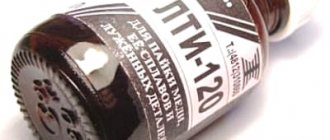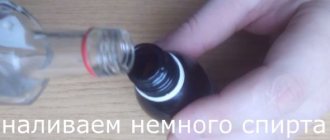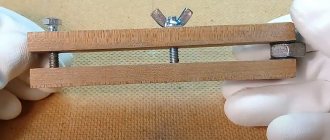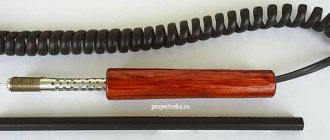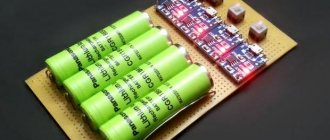Where is silicone used?
This material is used in almost all spheres of human life - in construction, everyday life, medicine and production. Silicone has earned popularity due to its unique and valuable qualities that are absent from analogues of this substance.
Silicone is capable of reducing and increasing the adhesion process , as well as imparting hydrophobic properties to the target object. This universal material is able to maintain its basic parameters at extremely high, low temperatures and in conditions of high humidity. In addition, silicones have dielectric characteristics, bioinertness, a high degree of elasticity, are durable and environmentally friendly.
On an industrial scale, silicone liquids and emulsions based on them are used as anti-adhesive lubricants for large heavy molds, the production of water-repellent liquids, greases, special oils, shock-absorbing, coolants, coolants, sealants and dielectric compounds. Particularly popular are defoamers made on the basis of silicone mixtures.
This material is used to produce silicone alkides and silicone polyesters for various coatings, which must be particularly durable and resistant. It follows that different types of gaskets, bushings, rings, cuffs, plugs and other parts can be used at temperatures from minus 60°C to plus 200°C.
Another property of silicone is resistance to substances such as ozone, radiation, sea water, ultraviolet radiation, boiling water, alcohol, acid solutions, alkalis, mineral oils, various fuels and electrical discharges.
Miracle liquid
In addition to the fact that there are a lot of different molds and molds made from silicone on sale, some people make them themselves at home. This is very easy to do using liquid food grade silicone. It allows you to create various crafts that are not inferior in quality to purchased ones. Just don’t confuse it with its technical analogue, which is also widely used for casting molds, but not for the food industry.
When choosing a liquid type of silicone, you need to pay attention to some indicators, on which the service life of the products and other important functional properties will depend in the future. A very important parameter responsible for the quality of the material is the elongation coefficient. Typically, it can vary from 200 to 1,300%. These indicators will determine how much the finished mold can stretch, and therefore the number of pours into it after production. The higher the percentage of elongation coefficient in liquid silicone, the longer the molds cast from it will last.
Also, an equally important indicator of the quality of such a substance is its viscosity. After all, it depends on how clear the finished products will be. You should choose liquid silicone that has a low viscosity so that it can fill hard-to-reach areas. Otherwise, there is no guarantee that the mold will be cast correctly, down to the smallest recesses.
How to make silicone at home
First way
To prepare silicone rubber (polydiethylsiloxane), you will need liquid glass and ethyl alcohol. Take a plastic container into which the components are poured in equal proportions and carefully mixed with any instrument. When the mixture thickens, you need to knead it into plasticine by kneading it with your hands.
Next, you can sculpt the necessary shapes from the silicone mass, which are left to harden for a while until the product becomes solid.
Second way
Needed:
- 150 g white spirit;
- 1 drop of acrylic paint;
- 3 drops of liquid glycerin;
- 30 g silicone sealant.
To make silicone, you need to immerse the sealant in a container, add paint, glycerin and white spirit. The solution must be mixed until a homogeneous mass is obtained. You can work with this solution for no more than five hours, since after this time it hardens.
Third way
You need to take equal amounts of silicone sealant and potato starch. Stir the mixture for about 10 minutes until the silicone begins to easily come off your hands, then you can begin making the required shape.
Fourth method
Take gelatin and glycerin in equal proportions and mix thoroughly. Then the solution must be heated in a water bath for about 10 minutes, stirring constantly. It is important to prevent the gelatin from boiling, otherwise a strong unpleasant odor may appear.
Fifth method
It is used to make silicone for DIY molds. To do this, you need to take a shape slightly larger than the object being copied. A little silicone is poured into the bottom of the mold and left until it hardens - this is the base of the object.
The thickness of the base should be one centimeter or more so that the “house rubber” securely wraps the object on all sides. If the mold comes out thin, then it will quickly tear when removing the prototype or will not hold on at all.
The prototype is then dipped into a container of gelatin to get rid of any air bubbles, and then quickly transferred to the bottom of the mold to stick. Then the mold must be completely filled with silicone. Homemade resin from the fourth method, which hardens very quickly, works well. Immediately after cooling, the mold must be disassembled, an incision made and the prototype carefully removed.
At the last stage, you will need to mix and pour epoxy resin into the mold. It will be difficult to remove a frozen casting, so you will need to completely break the silicone.
Big possibilities for small parts
The use of silicone has found wide application in the manufacture of things that not only have a beautiful appearance, but also very small, almost invisible objects. We are talking about all kinds of gaskets that act as a seal between parts. It would seem that such things are not particularly needed, but in their absence the operation of many mechanisms and devices would be disrupted. That is why great attention is paid to the production of these items. Food grade silicone for gaskets used in everyday life can be of different thicknesses and shapes. It all depends on the area of application of the seal. But at the same time, all types of such gaskets must have the same characteristics, namely:
- Be wear-resistant.
- Have high mechanical strength.
- Be heat resistant.
- Must not conduct electric current.
- Have water and vapor repellent properties.
As a rule, all the necessary sealing gaskets used in food production are commercially available. But if desired, food grade silicone for gaskets can be made at home. It is best to buy ready-made liquid silicone and pour the desired products by squeezing it from a syringe into molds. Other homemade production methods do not guarantee the safety of the product.
Getting rid of silicone on clothes
Silicone sealants are widely used in repairs and construction. But careless handling of this substance can lead to the formation of persistent stains on the fabric, and to get rid of them you will have to use special cleaners or improvised means.
- Acid-silicone sealant has a characteristic smell of vinegar, and its removal is carried out using a 70% acetic acid solution . When removing a stain from such silicone, you need to take precautions: wear glasses, strong rubber gloves and a respirator, since acetic acid negatively affects the eyes, skin of the hand and the respiratory tract. To clean the stain you need to apply it liberally, leave it for 30 minutes and remove the silicone with a rag.
- Alcohol-based silicone neutral sealant can be easily removed using alcohol-containing liquids . You can take medical, technical, denatured alcohol or vodka and apply it to the dirty area, and then remove the stain with a brush.
- Oxime, amine or amide silicone sealant can be removed using white spirit, benzine, acetone or solvent . The liquid is applied to the sponge, then to the stain and left for 30 minutes until the silicone dissolves. If necessary, the treatment can be repeated. Then wash the fabric as usual with washing powder.
There are also special compositions for cleaning the surface of fabrics from silicone. A remover under the trade name “Penta-840” or ANTISIL is ideal. It is necessary to carefully read the attached instructions before using any product.
In addition, the silicone stain can be cleaned mechanically using a plastic scraper. To do this, the fabric is stretched onto a flat surface and the stain is carefully scraped off. Residues can be removed using one of the methods listed above.
Important! You should only work with silicone sealants in thick cotton clothing, since it will not be possible to remove its residues from delicate items without the help of dry cleaning specialists!
Precautionary measures
Silicone itself is not a toxic substance, but the solvent emits fumes harmful to the body during operation, so all manipulations should only be carried out:
- wearing rubber gloves,
- with an open window or forced ventilation.
The ideal option is to fill the mold outside or on a balcony or loggia. This kind of work is very exciting and allows you to create the most unique models, bring any idea to life, without spending extra money!
Removing silicone from work surfaces
Silicone is a product that helps glue surfaces and seal seams. This substance prevents the penetration of air and moisture. Sealants with antibacterial composition are used in bathrooms, cars, construction, aquarium hobbyists, etc. The sealant is not easy to remove from the surface, but it is possible.
The sealant is made on the basis of solvents, which give this composition a pungent odor. In addition to the smell, solvents give silicone elasticity and help it adhere better to surfaces.
Therefore, chemicals that are sold in stores are often used to remove silicone.
But using traditional methods , you can remove silicone from any surface, for which you use white spirit, rags, blades and detergents.
To remove silicone from the work surface, you must first moisten it with white spirit using a rag. After about 60 seconds, the silicone will have a jelly-like consistency and can be easily cleaned with a blade. Then this area should be washed with detergent and wiped dry with a rag.
Silicone can also be removed mechanically, using a knife and pumice. But this option is suitable for surfaces that are not susceptible to scratches and chips.
Graceful forms
The use of silicone in the manufacture of kitchen utensils has made it possible to produce from it not just ordinary objects, but also give them all kinds of shapes. Particularly in demand are molds containing food-grade silicone that are equally suitable for use in freezers and ovens. Therefore, you can bake cookies and freeze ice cream in them. Such universal molds, having a beautiful appearance, make it possible to create culinary masterpieces, unlike metal molds of the same type.
When using such molds, you need to take into account one nuance that not all people know about. Namely, although food-grade heat-resistant silicone is used for their manufacture, they all have different temperature conditions for their use. Therefore, when purchasing new kitchen utensils made of silicone, you need to pay attention to the conditions of its use. All high-quality products from such a series must be equipped with technical specifications. If they are absent, it is better to refuse to purchase a questionable product.
fashionable accessories
The use of silicone has received excellent reviews not only as a means for making dishes and other household items, but also as beautiful jewelry. Many global jewelry manufacturers use food-grade silicone for beads in their collections. This type of material used can be produced with the addition of other substances. Most often, glitter and various dyes are used. Outwardly, such jewelry does not look like a soft material, because silicone with increased rigidity is used for its production.
A separate type of jewelry created from this material is baby sling beads. They were specially created for women who have small children. Being in the mother's arms and fiddling with colorful beads with her fingers makes it easier for the baby to calm down. This bead therapy is especially important for children who are teething. It is also useful for developing fine motor skills. In view of this functional use, not only round beads are used in sling beads, but also crafts of other shapes.
Disadvantages or advantages?
A particularly popular material, food-grade silicone, and products made from it, in addition to positive characteristics, have some disadvantages. Its disadvantages, however, as well as its advantages, include greater flexibility. In terms of advantages, this feature ensures easy storage and washing of the craft. But as a disadvantage, it does not allow the object to be stable. For example, when using molds for baking, you should immediately place them on the oven rack and only then pour in the dough.
Also, which is very important, the disadvantages of use include the inability to use such items near an open fire. Otherwise, this risks deformation or complete melting of the mold. And finally, it is worth mentioning one more small drawback: it is undesirable to use metal accessories when working with silicone objects, because they can damage the surface of the products.
Great discovery
The production of silicone in general is a very important event for humanity. After all, this type of material made it possible to significantly reduce the production of other, more expensive and labor-intensive things. He helped saturate the market with a variety of goods that made human life much easier. By using food-grade silicone to make various medical preparations, man has been able to improve advances in the field of plastic surgery and dentistry.
It is also impossible not to mention such an important use of silicone as the production of condoms, which are superior to latex analogues. To summarize the above data, we can say that food grade silicone is a very valuable material for the development of all types of industries in the world.
